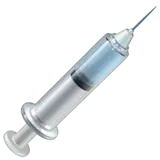Black spot
rose black spot disease


CLASSIFICATION
Fungi, Ascomycetes, Pezizomycotina, Leotiomycetes, Dermateaceae, Diplocarpon
ABOUT
Black spot is a fungal disease caused by the pathogen Diplocarpon rosae often found in roses. The symptoms include irregular purple or black spots on the upper part of leaves, and leaf drop.
How to treat?
 Biological
BiologicalRake and destroy the fallen leaves. Burn it, toss it into the garbage, or bury it deeply. Do not compost.
If the infection is not widespread, remove and destroy the infected parts of the plant. Burn it, toss it into the garbage, or bury it deeply. Do not compost.
Apply ecological products for plant protection (e.g. neem oil, baking soda, potassium bicarbonate, soap).
 Chemical
ChemicalIf necessary, apply fungicide containing thiophanate-methyl (GHS07: Harmful, GHS08: Health hazard, GHS09: Environmental hazard).
If necessary, apply fungicide containing chlorothalonil (GHS05: Corrosive, GHS06: Toxic, GHS07: Harmful, GHS08: Health hazard, GHS09: Environmental hazard).
 Disease prevention
Disease preventionUse resistant species and cultivars as well as healthy, certified seeds and seedlings.
Avoid prolonged wetting of the leaves, which can be caused e.g. by overhead irrigation.
Improve the air circulation around the plant (e.g. by pruning excess foliage or increasing the spacing between plants).